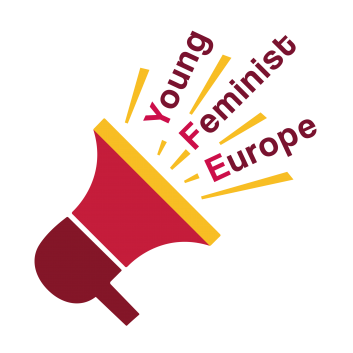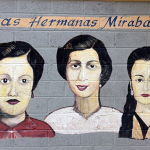UN House Scotland ICAN Team
Today, December 10th, the United Nations celebrates Human Rights Day. This marks the end of UN Women’s annual 16 Days of Activism against Gender-Based Violence, a campaign aimed at bringing together individuals and organisations to eliminate violence against women and girls. During the campaign, violence women experience at the hands of men, particularly sexual and domestic violence, are often the most highlighted issues. While this is absolutely essential, 16 Days of Activism, as well as all conversations around ending male violence, cannot forget nuclear weapons. Nuclear weapons are a particularly egregious symbol of the violence women face at the hands of the patriarchal society in which we live.
Under the perspective of nuclear technology, women are forgotten, erased from conversations about these high status weapons, and excluded from participating in negotiations about them. Nonetheless, nuclear weapons are inherently violent against women.
In January 2021, the Treaty on the Prohibition of Nuclear Weapons (TPNW) came into effect. This is the first treaty related to nuclear weapons that has specifically referenced their disproportionate impact on women. It is crucial that feminist conversations around eliminating violence against women always make this important reference to nuclear weapons and their acceptance as the pinnacle of misogynistic control. If we are to address gender-based violence and the threat women face from nuclear weapons, women’s voices can no longer be ignored.
Nuclear weapons are a feminist concern
Nuclear weapons are a gender-based issue because their use and testing disproportionately impact women and girls. Data from Nuclear Information and Resources Services (NIRS) indicates that radiation is more harmful for women since both cancer and death incidents were 50% higher among women than among men who had received the same radiation dose. In the aftermath of the use of nuclear bombs in Hiroshima and Nagasaki, it was observed that women were more likely to develop cancer. The same was seen after the nuclear meltdown at Chernobyl in 1986 with women having a higher risk of thyroid cancer. Exposure to nuclear radiation also puts women at additional risk of dying in childbirth, as well as increased still births and birth defects. Women are also more likely to be excluded from their communities and viewed as “contaminated” when exposed to nuclear radiation. Strict gender roles around marriage and reproduction meant that women exposed to radiation faced harsher stigma, and increased discrimination due to their perceived inability to take part in motherhood.
How is effective policy to be created when half of the world’s population are excluded from decision-making?
Evidence shows the impact of nuclear weapons is clearly not gender-neutral. Yet data collection on radiation harm has also only recently become disaggregated by sex, meaning that the impact of nuclear radiation on women has been underreported.
Throughout the development of nuclear technology in the 20th century, standards for measuring exposure to nuclear radiation were based on those predominant in the nuclear industry: men. No thought was given to whether this was an effective basis for measurement to be referred to the rest of the population and whether ionising radiation affects everyone equally has only recently begun to be asked. As mentioned, evidence from survivors in Japan shows that data collection and analysis must be gender and sex-disaggregated. Without this data, decision-makers are blind to the reality of the impact of nuclear weapons on women.
Representation matters
Furthermore, despite the gendered impact, women’s voices have historically been excluded from conversations around nuclear weapons, and international diplomacy more generally. Women make up just 15% of the world’s ambassadors. The first committee of the United Nations General Assembly, which focuses on international security and disarmament, had only 33% female members in 2017. How is effective policy to be created when half of the world’s population are excluded from decision-making?
Without a diverse, intersectional view, we cannot hope to address this power divide.
The TPNW goes someway in recognising this inequality women face, calling for signatories to increase their female representation. But more must be done.
Women’s voices, particularly the voices of women who have been directly affected at any point in the nuclear chain – whether they are the Indigenous women of Maralinga and Nevada, or African women subjected to institutionalised sexual violence in the uranium-rich countries, where colonialism is at the centre of civil wars – must be heard in all conversations around nuclear weapons. Without a diverse, intersectional view, we cannot hope to address this power divide.
To focus on women’s exclusion from nuclear disarmament diplomacy only shows half the picture, however. Women around the world have long been active in peacekeeping movements. While western women’s anti-nuclear activism often gets the most attention, women from India and the Pacific have been campaigning to end nuclear testing for decades. Since the 1980s, Pacific Islander women have led many advocacy campaigns focusing on peace, security, and a world free of nuclear weapons.
Looking to the future
While the work done during 16 Days of Activism is essential, we must focus on the future. In March 2021, the government of the United Kingdom announced an increase in the cap on their nuclear stockpile. To reach a gender equal world where women no longer have to fear violence, nuclear weapons can no longer be accepted as the means to ensure safety and security, and women cannot be excluded from this decision-making.
Nuclear weapons, like violence, are not gender-neutral. We often hear that women’s voices should be heard. This is not enough. If we are to enjoy a feminist future, diverse, intersectional representation is essential in all forums where decisions are made. Going forward, let us address nuclear weapons as a feminist issue central to eliminating violence against women. For more information on nuclear disarmament and the importance of gender perspectives, visit nuclearban.scot.
UN House Scotland is an ICAN Partner organisation.
UNHS, Acronym Institute and UNA-UK co-ordinate the ICAN partner organisations in the UK. UN House Scotland is a civil society organisation working to promote the Sustainable Development Goals (SDGs) at home and abroad. The UNHS ICAN team is focused on peace and security, viewing nuclear disarmament from a human rights perspective, and raising awareness around the feminist provisions of the TPNW.
Follow UN House Scotland on Instagram @unhousescotland or Twitter @unhousescotland.
If you would like to become involved in the UN House Scotland ICAN team, please get in touch via recruitment@unhscotland.org.uk



![(Un)Equal Parents? Combining family and work in Poland – (Nie)Równi Rodzice? Godzenie ról rodzinnych i zawodowych w Polsce [EN/PL]](https://www.youngfeminist.eu/wp-content/uploads/2016/01/089dc53242760c11c778077233569795-150x150.jpg)

![The Cologne attacks: the media, the hypocrisy of politicians and what should be done next – Die Übergriffe in Köln: Reaktionen in den Medien, Politiker-Scheinheiligkeit und was jetzt getan werden muss [EN/DE]](https://www.youngfeminist.eu/wp-content/uploads/2016/02/headlineImage.adapt_.1460.high_.Cologne_01a.1452310253200-150x150.jpg)
Average Rating